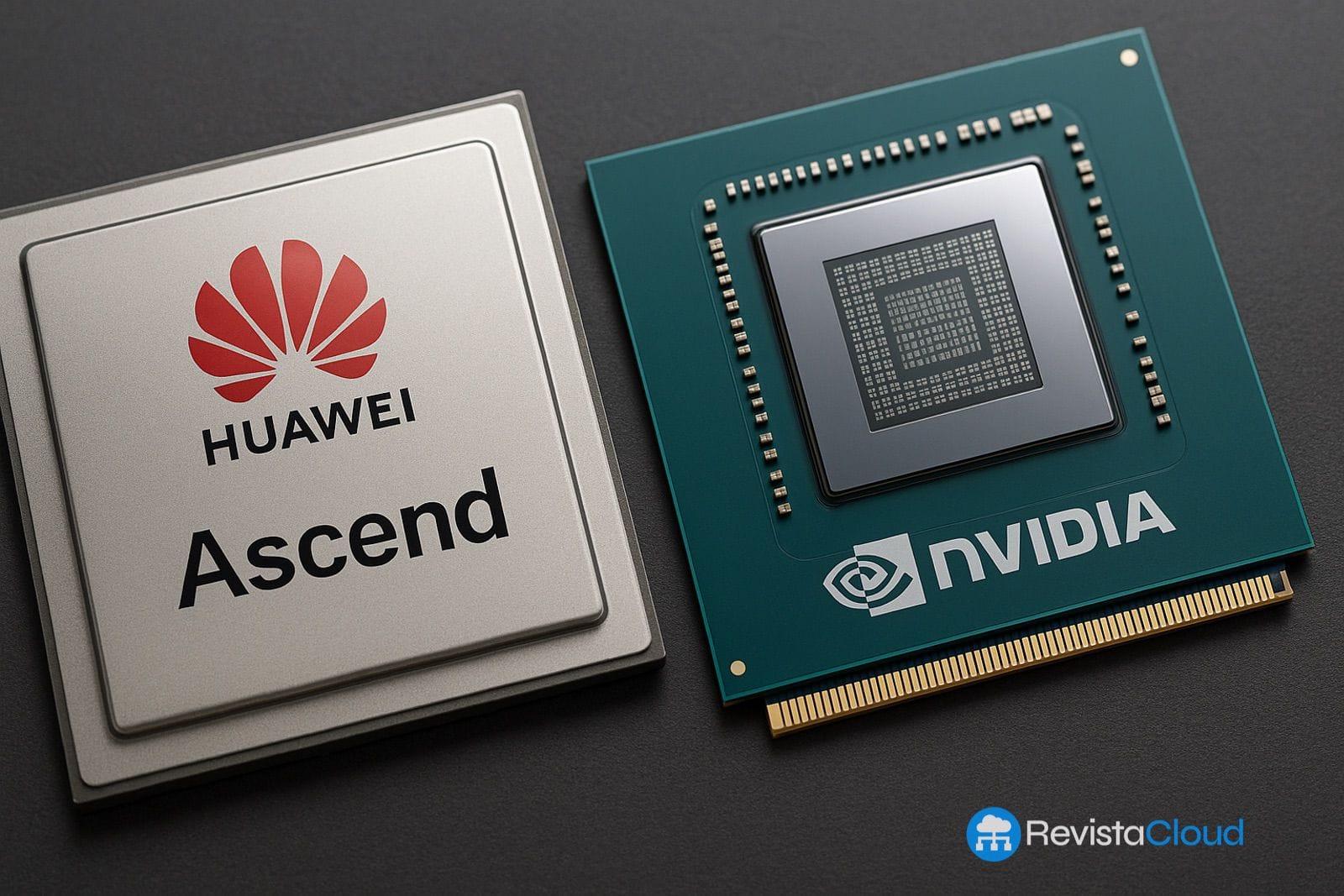The Chinese tech company is deploying its Ascend chips as a national alternative in response to restrictions imposed on NVIDIA in the Asian country
Huawei has become the primary headache for Jensen Huang, CEO of NVIDIA, in a landscape that completely redefines the balance of power in the global artificial intelligence (AI) market. While NVIDIA has traditionally faced competitors like Intel and AMD, the new challenge comes not from Silicon Valley, but from the heart of Shenzhen.
The sanctions imposed by the United States have forced NVIDIA to drastically reduce its presence in the Chinese market, where it previously dominated with its H100 chips for training and inferring AI models. Huawei has seized this gap, strengthening its position with its own chip offerings, the Ascend 910B and 910C, specifically designed to meet domestic demand and circumvent technology import restrictions.
The Ascend chips: a real alternative to the H100
Huawei claims that its Ascend 910C chips are designed to directly compete with NVIDIA’s H100, regarded as one of the most powerful processors in the world for AI workloads. While not all technical details of the Ascend 910C are known, various analysts suggest that its performance falls within a range comparable to high-end Western models.
Meanwhile, NVIDIA has been forced to offer stripped-down versions of its products—with limitations on power and bandwidth—to comply with U.S. export regulations, further weakening its competitiveness in a market that represents a key part of its global revenue.
Huawei: vertical integration and technological sovereignty
Beyond chip design, Huawei has embarked on an ambitious vertical integration strategy. The company not only designs its semiconductors but also actively participates in production, thanks to its own factories (fabs) and collaborations within the Chinese industrial ecosystem. According to local reports, Huawei has reportedly achieved stable production of 7-nanometer chips, a goal that was recently considered unattainable for the Chinese industry without access to cutting-edge lithographic machinery.
This autonomy in the supply chain places Huawei in a unique position: it does not depend on sanctioned external partners and can offer a comprehensive solution to the local market, from hardware to software platforms and associated services. At this point, even NVIDIA’s powerful CUDA ecosystem could face a serious competitor if Huawei continues to develop its own tools for developers and data centers.
NVIDIA’s reaction: growing concern
Recent remarks by Jensen Huang regarding U.S. restrictions and their impact on AI expansion in China reflect growing anxiety within NVIDIA’s leadership. While the company tries to mitigate market loss with its recognized superiority in AI software and tools, regulatory hurdles and the rapid consolidation of Huawei complicate any short-term recovery attempts.
The “AI Diffusion” policy implemented by the United States, which limits the export of key components, is accelerating the search for technological autonomy in China. And Huawei, with its industrial muscle and institutional support, is the natural candidate to lead that transformation.
A new global balance in AI
The tussle between Huawei and NVIDIA transcends purely business interests: it marks a new phase in the race for leadership in artificial intelligence, where geopolitics and technological sovereignty play a decisive role. If this trend continues, NVIDIA could be displaced in one of the world’s largest markets, not due to technological inferiority, but because of a combination of external restrictions and highly capable local competition.
Ultimately, the green giant faces an unprecedented challenge: not only to maintain its technological supremacy but also to demonstrate that it can adapt to a multipolar world where access to the market is no longer guaranteed. Huawei, meanwhile, is steadily advancing toward a scenario where China no longer depends on foreign silicon to lead the AI revolution.
via: wccftech

